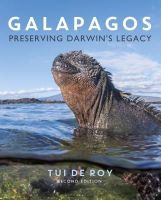 Tytuł: Galapagos: Preserving Darwin’s legacy
Tytuł: Galapagos: Preserving Darwin’s legacy
Autor(zy): Tui De Roy
Rok wydania: 2009
Wydawnictwo: Firefly Books
Dlaczego w bazie: Książka o Galapagos, a miejsce to jest bardzo związane z żółwiami, w książce znalazła się więc ogromna ilośc wzmianek o nich (w tym wspominany jest samotnym George). Prezentujemy poniżej oczywiście tylko wybrane kawałki, malutki kawałek wszystkich żółwich wzmianek. Zamieszczamy też oczywiście małe zdjęcia grafik z żółwiami.
Wzmianka o powstawaniu TE:
It was while he was in the Galapagos Archipelago that Darwin noted small differences in the mocking birds from different islands. Also pointed out to him by the local governor were the island variations among the giant tortoises. Later, the finches that were eventually named after him became one of the other triggers for his thoughts on evolution.
O relacji roślin i zwierząt:
These plants have also developed some remarkable relationships with resident animals, their acrid orange to yellow fruits being very attractive to land birds and giant tortoises. Not only does this offer the plants free transport and readily available fertilizer packets aiding their dispersal, but the seeds actually germinate better after passage through a tortoise’s digestive tract. Today, not only have these animal partners been much reduced in abundance and distribution, but a new threat has emerged with the introduction of two species of cultivated tomatoes (S. lycopersicum and S. pimpinellifolium).
O tym jak wulkany wpływają na kształt fauny i flory Galapagos:
Volcanism on Alcedo Volcano has played a rather unique role in that island’s genetic diversity: the explosive eruption of rhyolite nearly wiped out the Alcedo race of tortoise 100,000 years ago. There is substantive genetic evidence that only one female, or her clutch of eggs, survived the eruption — a graphic demonstration of how volcanoes continually reshape the biology of Galapagos.
Przykładowy solidny fragment o żółwiach morskich:
A SEA TURTLE SAFE HAVEN
The green turtle of the Galapagos (above) represents a quandary for taxonomists. Due to its unusually dark coloration and other features, it has been tentatively named the black turtle, Chelonia agassizii, yet geneticists find it identical to the widespread Pacific green turtle, C. mydas. Whichever is correct, the large population nesting in the archipelago is a conservation treasure-trove compared to turtles worldwide. Most sea turtles are in precipitous decline due to a plethora of manmade causes, ranging from direct hunting and nest poaching to plastic bag ingestion, fisheries bycatch, pollution-induced diseases, coastal development, plus predation, trampling and light pollution on nesting beaches. With the banning of longlines from the Galapagos Marine Reserve and the eradication of nest-raiding pigs in critical areas, these islands represent a true safe haven. But sea turtles have survived since before the age of dinosaurs by ranging far and wide across the oceans. Flipper tagging and more recent satellite tracking show that while some appear to be quite sedentary, Galapagos green turtles, like the sharks found in the islands, regularly travel thousands of miles into danger zones along the coasts of Central and South America. This tragedy was graphically illustrated by DC235, a female tagged by CDF researchers while nesting on Las Bachas Beach, Santa Cruz, in February 2004. She was subsequently drowned on a tuna longline hook near Panama in December 2005. Other satellite tracks show turtles moving far into the Pacific, south and west of the islands. How or why they travel so far remains a mystery. Galapagos offshore waters are also on the migration routes of leatherbacks and olive ridleys (below left) from the north, while hawksbills (below right) are infrequent inshore visitors.
Przykładowy solidny fragment o żółwiach lądowych:
Galápagos and their Tortoises
The taxonomic history of the Galápagos giant tortoises is complex and remains unsettled and contentious. Long considered either a single species, Chelonoidis nigra, with multiple subspecies, or different species within the Chelonoidis genus. Although the subject remains controversial, our genetic work has led us to believe that species status is warranted for almost all remaining taxa. Today, there are 15 named species, including a recently discovered one on the island of Santa Cruz (the eastern Santa Cruz tortoises, C. donfaustoi). Four species have gone extinct since humans first arrived on the islands in 1535, one of them in 2012, when the last individual of C. abingdoni from the island of Pinta, a male nicknamed Lonesome George, died in captivity.
The most obvious differences among species is in shell or carapace shape. Some populations have a 'domed’ carapace with a low, gently curved front and rounded profile. Domed populations are most often found on the upper slopes of higher islands where conditions are generally cool and moist, with relatively abundant food supply. This compact shape is thought to provide thermal protection against the cold. Tortoises characterized as 'saddlebacks’ (due to their resemblance to ancient Spanish-style saddles) have a carapace with an elevated anterior opening, and a flatter lateral appearance, with long forelegs and necks. They are found on low, arid islands where resources are scarce and food is the primary limiting factor. This morphology allows longer upward extension of the neck, which permits browsing on higher perennial vegetation. It may also serve in antagonistic displays during inter- individual competition for scarce food or mates, since dominance is established by the individual who can raise its head highest while gaping widely. Several researchers have argued that these distinct morphologies develop adaptively during growth, but the hereditary basis for these differences is evident in both types of tortoises sharm the same environment when reared in captivity.
Of the 11 extant species, those on the islands of Española, San Cristóbal and Pinzón are the most conspicuous examples of saddleback animals, together with the recently extinct species on Pinta, and the mysterious Fernandina tortoise of which only a single individual was ever recorded. The clearest dome types occur on Santa Cruz Island (the Western Santa Cruz tortoise) and Alcedo Volcano on Isabela Island, with less distinctive, intermediate forms on Sierra Negra, Cerro Azul, and Darwin volcanoes, all on Isabela. The population on the northernmost Isabela volcano, Wolf, is of mixed morphology, a fact that is important to our genetic work discussed below.
Podsumowanie losów żółwi:
The most iconic animal of Galápagos, and arguably the most abundant and ecologically important, ended its first four centuries of contact with humans as the most ravaged. By the twentieth century, two tortoise species were extinct, two had a single individual left, a fifth had reached a level so low that no reproduction occurred, and a sixth had no natural recruitment – each year all of its hatchlings were eaten by black rats, which had invaded their island off a sailing vessel in the late 1800s. The biggest threat was no longer humans but the animals that humans had brought with them over the centuries – predators (pigs, rats, dogs, cats, fire ants) and competitors (goats, donkeys, and cattle). After more than a million years in isolation, Galápagos tortoises could not adapt to these new residents and the subsequent destruction of their habitat.
If not for their longevity, more than just four Galápagos tortoise species would be extinct. But with a lifespan of up to two hundred years, aging tortoises in less accessible areas of the archipelago survived to a more enlightened time when the growing fields of conservation and ecology began to focus on the special places of the world, offering hope for restoration of the tortoise populations.In the 1980s, we joined the growing group of scientists, conservationists, and managers of protected areas, who, since the initial work by the Charles Darwin Research Station (CDRS) in the 1960s, had focused their efforts on ensuring the survival of the remaining Galápagos tortoise species. Linda began in 1981, when she traveled to Galápagos for her Ph.D. research on giant tortoises. Wacho started in 1989, as a young CDRS volunteer working at the tortoise breeding center.
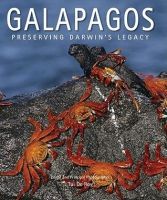
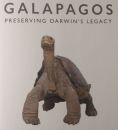
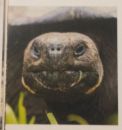
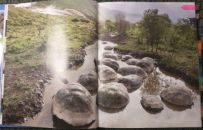
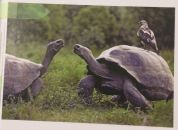
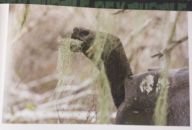
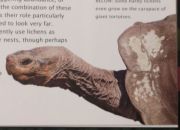
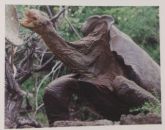
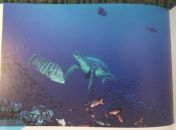
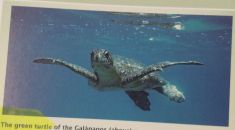
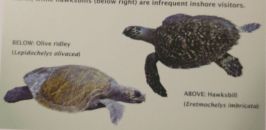
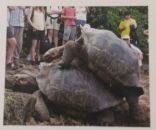
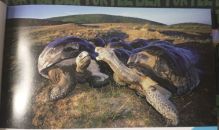
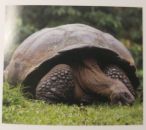
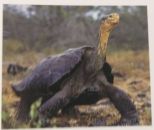
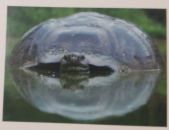


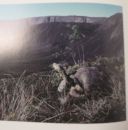
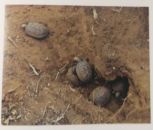
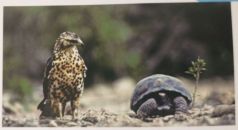
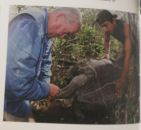
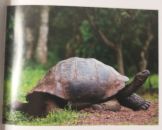
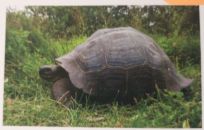
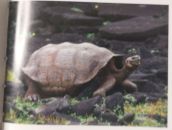
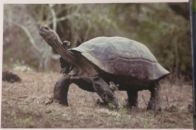
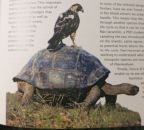
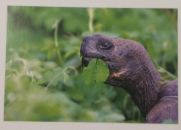
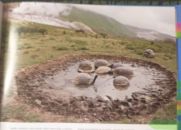
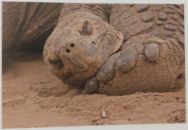
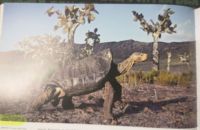
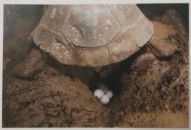
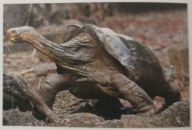
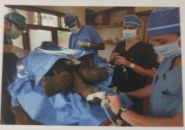
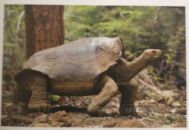
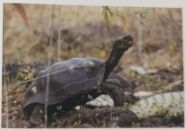
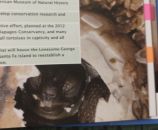
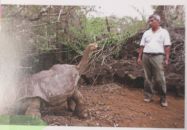
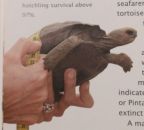
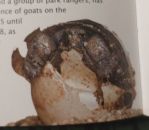

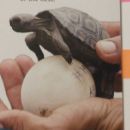
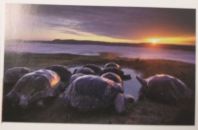
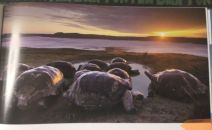

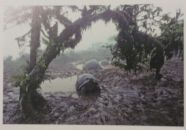
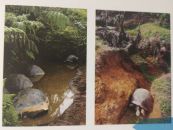
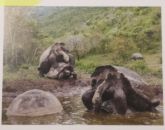
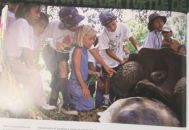
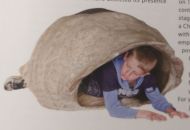


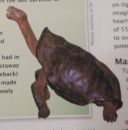
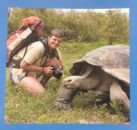
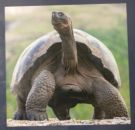
Autor: XYuriTT
